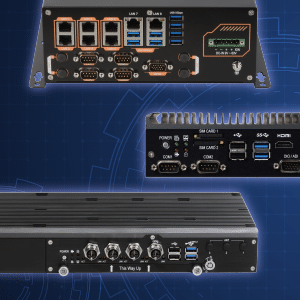-
Support
Welcome to SINTRONES FAQ section. Seek answers to the frequently asked questions here.
If you are unable to locate the information you require, please complete our FAQs form, and we shall expeditiously attend to your inquiries.
- For audio topic:
- Please follow steps below to disable the “auto mute mode” then try again
- Enter “custom.conf” by typing below command at terminal: alsamixer
- Move to “auto mute mode” by “→”and ”←” at your keyboard
- Disable “auto mute mode” by “↑”and ”↓” at your keyboard
- Press “Esc” to exit then try again

AX210 WiFi module that Intel has updated the new firmware on the 99ARN4 hardware version. This update leads to conflicts with the WiFi driver integrated into Ubuntu 20.04, resulting in WiFi malfunctions. Currently, you can follow the below alternative solutions to resolve the WiFi issue. Please refer to the steps below:
1. First, remove the WiFi module, and then boot into the ubuntu system.
2. cd /usr/lib/firmware
3. sudo rm iwlwifi-*
4. Unzip the attached file for iwlwifi-ty-a0-gf-a0-59.ucode version. (Download Link : Linux* Support for Intel® Wireless Adapters)
5. cp iwlwifi-ty-a0-gf-a0-59.ucode /lib/firmware
6. reboot the system and re-insert the WiFi module
If your computer experiences blue screens or frequent crashes, it is recommended that you use the software provided in the link below to scan your memory
Some Sintrones products come pre-installed with an operating system. When you need to reinstall the operating system, you can refer to our image file restoration SOP provided below.
https://drive.google.com/file/d/1VkdYNwE_wKyww7k61vcLjqYoEara9IfT/view?usp=drive_link
Depending on the brand and specifications of the hard drive, SSD information may sometimes not be correctly detected in the BIOS. Please follow the steps below to configure your SSD in the BIOS.
Check the SATA mode AHCI/RAID/IDE and SATA Gen Speed.
Press “del” into the BIOS in boot stage and set the SATA mode to AHCI
Chipset -> PCH-IO Configuration -> SATA And RST Configuration -> SATA mode Selection -> AHCI.

Chipset -> PCH-IO Configuration -> SATA And RST Configuration -> SATA Controller Speed ->Gen 1. 2. 3. (base on your SATA Gen requirement)

Sintrones offers various series of hardware platforms tailored to different environmental application requirements. You can refer to the following memory support list to meet your needs.
| Memory Support List | |||
| Product name | Series | Support Menory Maximize Spec | SO-DIMM socket slot |
| SBOX-2321 | Embedded Computing | Supports DDR4-3200 up to 32 GB | 1 SO-DIMM slot |
| SBOX-2622 | Embedded Computing | Supports DDR4-3200 up to 32 GB | 1 SO-DIMM slot |
| SBOX-2602 | Embedded Computing | Supports DDR4-3200 up to 32 GB | 1 SO-DIMM slot |
| SBOX-2621 | Embedded Computing | Supports DDR4-3200 up to 16 GB | 1 SO-DIMM slot |
| SBOX-2601 | Embedded Computing | Supports DDR4-3200 up to 16 GB | 1 SO-DIMM slot |
| SBOX-2320 | Embedded Computing | Support DDR3L-1600 SO-DIMM up to 8GB | 1 SO-DIMM slot |
| SBOX-2300 | Embedded Computing | Support DDR3L-1600 SO-DIMM up to 8GB | 1 SO-DIMM slot |
| VBOX-3122 | In-Vehicle Computing | Supports DDR4-3200 up to 32 GB | 1 SO-DIMM slot |
| VBOX-3630R-M12X | In-Vehicle Computing | Supports DDR4-3200 Up to 64 GB | 2 SO-DIMM slot |
| VBOX-3630P | In-Vehicle Computing | Supports DDR4-3200 Up to 64 GB | 2 SO-DIMM slot |
| VBOX-3620-M12X | In-Vehicle Computing | Supports DDR4-2133 up to 32GB | 2 SO-DIMM slot |
| VBOX-3611-4L-D5G | In-Vehicle Computing | Supports DDR4-2133 up to 32GB | 2 SO-DIMM slot |
| VBOX-3121-NX | In-Vehicle Computing | Supports DDR4-2133 up to 16GB | 1 SO-DIMM slot |
| VBOX-3131 | In-Vehicle Computing | Supports DDR3L-1600 up to 8GB | 1 SO-DIMM slot |
| IBOX-500 | In-Vehicle Computing | On-board LPDDR4 3GB | On-board |
| ABOX-5210(P)(G) | Edge AI Computing | Supports DDR4-2666/2933 up to 64GB | 2 SO-DIMM slot |
| ABOX-5211(P) | Edge AI Computing | Supports DDR4-3200 Up to 64 GB | 2 SO-DIMM slot |
| ABOX-5200(P) | Edge AI Computing | Supports DDR4-2400 up to 32GB | 2 SO-DIMM slot |
| ABOX-5100(P) | Edge AI Computing | Supports DDR4-2400 up to 32GB | 2 SO-DIMM slot |
| ABOX-5000(P) | Edge AI Computing | Supports DDR4-2133 up to 32GB | 2 SO-DIMM slot |
| EBOX-7000 | Edge AI Computing | Supports DDR4 2400/2666 up to 64GB | 2 SO-DIMM slot |
Based on some customized requirements, the system needs a BIOS update to achieve the desired hardware environment for the customer. This article primarily guides customers on how to update their system's BIOS. For detailed steps, please refer to the attached SOP.
Download the SOP from below Google drive.
https://drive.google.com/file/d/19V5TM_c_NVCdeAub1f6X3ZzeiQlZ80Qd/view?usp=drive_link
Sintrones provides the SinSmart utility for all functions on the In-vehicle PC, including system power management and SIM card switching settings. More detail utility informations, please download the attached PDF.
https://drive.google.com/file/d/11MkxwWth130ZTxOZ02jyrv4AqgM0R2f6/view?usp=drive_link
- Check voltage of power supply, please refer to manual to check suitable watt of power supply for your model.
- Check whether CPU and memory has been installed properly.
- Switch another good memory then try again.
- Reset MCU: plug in DC, keep IGN off, press and hold power button for 15 seconds until ACC light blinking.
- If steps above can’s solve problem, record the status of power button then report to technical support team.
Status of power button list as below:
- Does power button is light or not?
- Does power button is blink or keep bright?
- What color of power button? Red or blue?
The CMOS battery, also known as the Complementary Metal-Oxide Semiconductor battery, is a small battery found on most modern motherboards. It provides a small amount of power to the computer’s basic input/output system (BIOS) in order to keep it functioning and maintain any settings that are stored within the BIOS, such as the computer’s time and date.If the battery's voltage output is less than 2.3V, please change a new one battery on the motherboard.
You can refer to the following pics to check the CMOS battery Voltage.
Red wire = V+
Black wire = V-





